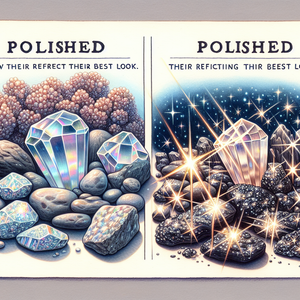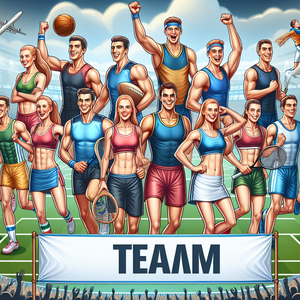Standing Tall on One Foot: The Journey of an Artist Who Defies Limits

The painter’s life took a dramatic turn due to a life-altering event—the loss of their leg. This traumatic experience forced them to reimagine not only how they moved through the world but also how they expressed themselves within it. While some might view such a loss as insurmountable, this artist chose to see it as a profound opportunity to grow and transform. Initially, art became a therapeutic outlet. What began as a way to process grief and adapt to a new reality soon grew into a passionate vocation. The artist discovered that standing on one leg—something they were now required to do—could serve as both a physical anchor and a metaphorical foundation for their creativity. This balance between physical resilience and emotional expression became the cornerstone of their work. Their journey is a reminder that life often requires us to find stability in instability. Through art, they confronted themes like vulnerability, imperfection, and adaptability, weaving these concepts into their paintings.
Finding Balance in Art and Life
Balance is at the heart of this artist’s life and art. Physically, standing on one leg requires immense focus, core strength, and a heightened sense of equilibrium—all traits that are mirrored in their creative process. Their paintings feature asymmetrical compositions, fragmented imagery, and subjects that seem to teeter on the edge of stability, reflecting their lived experience. One of their most celebrated pieces, titled *Wings in Flight*, depicts a flock of birds mid-air, their wings stretched but uneven. Rather than aiming for perfect symmetry, the painting focuses on the movement and dynamism of flight, celebrating imperfection as a natural and beautiful part of life. The artist’s work challenges traditional notions of perfection in art, inviting viewers to embrace imbalance as a universal truth. “Balance isn’t about symmetry,” they once said, “it’s about finding harmony in what you have, even when it feels incomplete.”
The Metaphor of Standing Tall
The phrase “standing tall” takes on profound meaning for this painter, as it encapsulates both their physical reality and their emotional resilience. Standing on one leg might seem like a limitation, but for this artist, it is a daily act of defiance against adversity. It is also a metaphor for their creative process—each act of painting is a delicate balance between control and freedom, vulnerability and strength. Their posture while painting is both practical and symbolic. When balanced on their single leg, they are at one with their art—every brushstroke is a testament to the precision and intentionality required to maintain equilibrium. This physical act of balancing infuses their work with an energy that resonates deeply with audiences. Beyond the canvas, their story has touched lives far and wide. Featured in art exhibitions, documentaries, and interviews, the artist has become a beacon of hope for anyone facing life’s challenges. Audiences are captivated not only by their art but also by their refusal to let limitations define them.
The Power of Perspective
Perspective is central to both the artist’s work and their philosophy. Losing their leg forced them to view the world from a new angle—both literally and figuratively. This shift in perspective is reflected in their paintings, which often explore unusual vantage points or distorted proportions. In one series, entitled *Everyday Giants*, mundane objects like chairs, tables, and teacups are depicted from low, exaggerated perspectives, making them appear monumental. This approach invites viewers to see the ordinary with fresh eyes, reminding us of the beauty in the overlooked. The painter’s personal philosophy mirrors this artistic approach. “Losing my leg didn’t just change how I walk,” they said in an interview. “It changed how I see. And what I see now is a world full of possibilities, even in the midst of loss.” Their ability to transform personal hardship into a new way of seeing—and creating—has made their art deeply relatable. It serves as a reminder that limitations can lead to new opportunities for growth, creativity, and transformation.
The story of this one-legged painter is not just about art—it’s about resilience, adaptability, and the power of perspective. Their journey shows us that adversity, while daunting, can also be the catalyst for self-discovery and creativity. Their work challenges us to rethink our notions of balance, perfection, and beauty, urging us to embrace imperfection as a natural and even necessary part of life. In standing tall on one foot, this artist has shown the world that balance is not about having equal parts but about finding harmony in the uneven. Their art is more than a reflection of their life—it is a celebration of the human spirit’s ability to overcome, adapt, and inspire. Through their paintings, they invite us to see the world differently, to find strength in vulnerability, and to celebrate the beauty of imperfection. Their story is a testament to the boundless potential of creativity and the resilience of the human heart, proving that even in the face of great challenges, it is possible to stand tall—and to thrive.
Art Therapist
hospitals, rehabilitation centers, and mental health clinics
Responsibilities
Facilitate individual or group art sessions to support mental health and well-being.
Help clients process trauma, manage stress, and build self-confidence through artistic expression.
Collaborate with psychologists or healthcare professionals to integrate art therapy into treatment plans.
Unique Qualification
Requires a master’s degree in Art Therapy or a related field, plus strong interpersonal and observational skills.
Accessibility Consultant for Creative Spaces
major museums, cultural organizations, and government agencies
Responsibilities
Assess design and layout of creative spaces to improve mobility, signage, and access points.
Develop programs or workshops to promote inclusivity in art exhibitions and events.
Work with architects, curators, and disability advocates to implement universal design principles.
Unique Qualification
Knowledge of accessibility laws (e.g., ADA in the U.S.) and experience in inclusive design.
Adaptive Design Specialist for Artists with Disabilities
nonprofits, assistive technology companies, and design firms
Responsibilities
Design and prototype adaptive art tools (e.g., ergonomic brushes or easels for one-handed use).
Collaborate with disabled artists to refine and customize solutions that enhance their creative process.
Partner with art schools or organizations to distribute adaptive tools and provide training.
Unique Qualification
Background in industrial design or engineering, with a specialization in assistive technologies.
Creative Director for Inspirational Campaigns
advertising agencies, media companies, and nonprofit organizations
Responsibilities
Lead the development of multimedia campaigns centered on themes of perseverance and creativity.
Collaborate with filmmakers, writers, and artists to produce compelling content for exhibitions, advertisements, or documentaries.
Advocate for underrepresented voices and ensure authentic storytelling in all projects.
Unique Qualification
Strong portfolio in storytelling-driven campaigns, with a focus on emotional and cultural impact.
Curator of Contemporary Art with a Focus on Resilience
art museums, galleries, and cultural institutions
Responsibilities
Research and acquire artworks that explore unique perspectives on resilience and balance.
Organize exhibitions, lectures, and community events to engage audiences in meaningful dialogue about adversity and creativity.
Collaborate with artists to showcase their work in innovative and impactful ways.
Unique Qualification
Deep knowledge of contemporary art trends and themes, plus experience in exhibition planning and public engagement.


